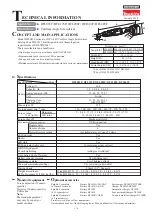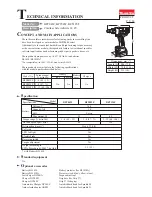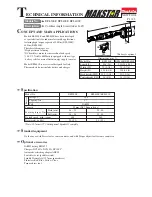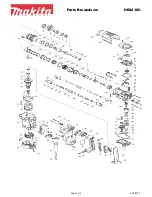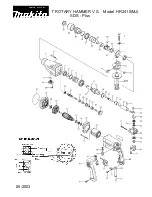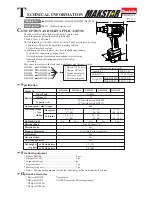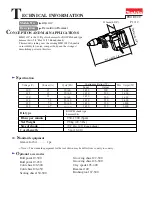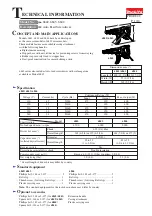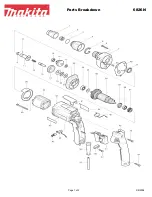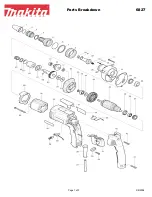
15
INTENDED USES
This power supply is intended to be used with electrophoretic devices which
operate below the rated output levels listed below. The maximum output levels
are shown for each model using this instruction manual. Four sets of output
connectors operate in parallel to provide an output of constant voltage, constant
current (milliamps) or constant power (watts).
• Model EC600-90
4000 V, 300 mA, 300 W
• Model EC2060
2000 V, 600 mA, 300 W
• Model EC3000-90
3000 V, 300 mA, 300 W
• Model EC6000-90
6000 V, 200 mA, 200 W
SET-UP
Unpacking of the Unit:
Unpack and inspect the power supply carefully
for any damage. Do not use the unit if it is damaged. If damage is found,
save the packing material and report the problem to Thermo EC or your local
distributor.
Location:
Make sure that the unit is set up in a location where it is pro-
tected from physical damage, moisture, corrosive agents and extreme tem-
peratures, and make sure that the “fins” at the rear are not obstructed. The
unit should be readily accessible for safe operation.
Connection with the AC Mains:
Connect the unit to the AC mains
carrying the appropriate specified voltage (V) in accordance with the rating
label located at the rear of the unit. Make sure that the mains receptacle and
the power supply plug both have the proper 3–wire (grounded or earthed)
connections.
BASIC OPERATING INSTRUCTIONS
(See fold out locator guide on last page)
Notes on General Operation:
The output of this power supply is con-
trolled by three separate operating limits. An operating limit, with a value
above zero, must be set for voltage, milliamps and watts in order to generate
an output. Once activated, the output of the power supply will then increase
until an operating limit is reached. When this occurs, one of the three yellow
At Limit lights will be illuminated. This light will indicate which operating limit
has been reached and which mode of control (constant volts, current or
power) has been established. The detailed instructions contained in this man-
ual refer to adjustment for operation in constant voltage. In principal, the
method is the same for any mode of operation; only the value of operating
limits change.
For added convenience, this power supply will restart itself in the event of a
power failure. This will not reset the operation of the count– down timer.
2
▲
▲
!
▲
!
▲
APPENDIX A. Relationships Between Volts, Milliamps,
Watts and Chamber Resistance
There are three fundamental concepts which form the basis for understanding the
relationship between volts, milliamps and chamber resistance. When combined with
the power formula they also define watts.
1 A movement of free electrons from atom to atom forms an electric current which
is measured in milliamps (mA) or amps (A).
2. Electrostatic lines of force between two different charges produce a pressure that
can move electrons (measured in volts).
3. All substances oppose the movement of electrons to some extent and are said to
have resistance (measured in ohms).
These three factors are always present in any operating electric circuit. It is possible
to incorporate them into one inclusive statement:
Ohm’s Law
The value of the current that will flow in any circuit will be
directly proportional to the value of the voltage applied and
inversely proportional to the value of the resistance.
or
amps = volts / resistance
combined with
The power formula:
volts x amps = watts
(where 1 amp = 1000mA)
Together, these two formulas define all aspects of the relationship between volts,
milliamps, watts and chamber resistance.
APPENDIX B. Running Multiple Chambers
This power supply is equipped with four sets of 4 mm output connectors which are
connected in parallel. The significance of this is explained by following statements:
1. The voltage is applied equally to all branch paths in a parallel circuit.
2. The current flow in the branch paths of a parallel circuit is determined by the
resistance of the individual paths.
3. The sum of the currents entering the branch paths of a parallel circuit is equal to
the sum of the currents leaving the branch paths of a parallel circuit.
A practical example of this is described as follows:
The power supply is connected to two identical horizontal submarine electrophoresis
chambers (cells A and B). The power supply output is adjusted to 100 volts, at con-
stant voltage, and the current display indicates 60 milliamps. By applying the three
rules for parallel circuits we can determine the following information.
THERMO EC HIGH VOLTAGE POWER SUPPLIES
THERMO EC HIGH VOLTAGE POWER SUPPLIES











